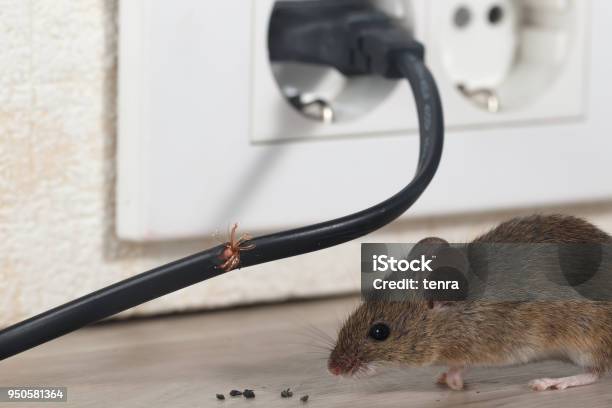The Rodent Reality: What US Families Need to Know About Common Household Pests and How to Deal With Them
If you’ve ever heard the telltale scratch of tiny claws in your walls at night or discovered mysterious droppings in your kitchen cabinets, you’re not alone. Nearly 14.8 million housing units across the United States reported seeing rodents in the last 12 months, making rodent control one of the most common household challenges American families face today.
The reality is that rodents don’t just represent a minor inconvenience. These unwelcome visitors can pose serious health risks, cause expensive property damage, and create ongoing stress for homeowners. Understanding which rodents commonly invade homes and yards, recognizing the risks they present, and knowing how to effectively address infestations can help families protect their health, property, and peace of mind.
The Indoor Invaders
House mice top the list of indoor rodent concerns for American families, and for good reason. These small, gray-brown creatures measure only 2-4 inches long but pack a big punch when it comes to problems. House mice can squeeze through openings as small as a dime, making it incredibly difficult to keep them out once they’ve identified your home as a food source. A single pair of mice can produce up to 10 litters per year, with each litter containing 4-8 babies, meaning a small problem can quickly become a major infestation.
The damage house mice cause extends far beyond their small size might suggest. They contaminate food supplies with their droppings and urine, leave trails of waste throughout living spaces, and have an alarming habit of chewing through electrical wires. This wire-chewing behavior isn’t just annoying; it creates genuine fire hazards that put families at risk.
Norway rats, also known as brown rats, represent a more serious escalation in the rodent problem hierarchy. These robust, non-native species can grow up to 16 inches long, not including their equally long tails. Norway rats are excellent diggers and often create extensive burrow systems around foundations, under porches, and in basements. Their powerful teeth can gnaw through wood, plastic, drywall, and even soft metals like aluminum and lead. Unlike mice, which might nibble at wires, Norway rats can chew through substantial structural elements of homes.
Roof rats, sometimes called black rats or ship rats, bring their own set of challenges. True to their name, these agile climbers often enter homes through upper levels, accessing rooflines, attics, and upper-story windows with ease. They’re slightly smaller than Norway rats but equally destructive, and their preference for elevated spaces means they often contaminate insulation and create problems in areas that are difficult to access for cleaning and repair.
The Outdoor Army
While indoor rodents capture most of the attention, outdoor rodent populations can be equally problematic for homeowners who take pride in their yards and gardens. Voles rank among the most common yard-infesting rodents, and their impact on landscaping can be devastating. These small, mouse-like creatures create complex networks of tunnels just below the soil surface, feeding on grass roots, plant bulbs, and tree bark. In winter, voles often girdle young trees by eating the bark around the entire circumference, killing the tree completely.
Gophers present a different but equally frustrating challenge. These underground specialists create extensive tunnel systems that can undermine lawns, garden beds, and even structural foundations. Gophers feed almost exclusively on plant roots and bulbs, meaning prized flowers, vegetables, and ornamental plants can disappear seemingly overnight. The telltale mounds of soil that mark gopher activity can turn a pristine lawn into a lunar landscape.
Prairie dogs, while less common in suburban areas, can establish large colonies that fundamentally alter landscape ecology. These social rodents create “towns” of interconnected burrows that can extend for acres underground. While they primarily eat grasses and other vegetation, their extensive digging can cause significant erosion and soil displacement.
Groundhogs, also known as woodchucks, represent the largest rodent threat most homeowners encounter. These hefty creatures can weigh up to 14 pounds and are capable of digging substantial burrows under decks, sheds, porches, and building foundations. Beyond their destructive digging habits, groundhogs are voracious eaters that can devastate vegetable gardens, flower beds, and ornamental plantings in remarkably short periods.
The Health Reality
The health risks associated with rodent infestations extend far beyond the obvious “ick factor” of sharing living space with uninvited animals. Rodents can carry and transmit numerous diseases to humans through multiple pathways, including bite wounds, contaminated food or water, and airborne particles from dried urine or droppings.
Hantavirus represents one of the most serious rodent-borne health threats. This potentially fatal respiratory disease is primarily spread through inhaling dust contaminated with rodent waste. While relatively rare, hantavirus cases spike in areas with significant rodent populations, and the disease can progress rapidly once contracted.
Salmonellosis, commonly known as food poisoning, frequently results from consuming food or water contaminated by rodent droppings or urine. Unlike hantavirus, salmonella exposure is quite common in homes with rodent problems, and symptoms can range from mild gastric discomfort to severe dehydration requiring hospitalization.
Beyond infectious diseases, rodents can trigger or exacerbate respiratory conditions like asthma and allergies. Rodent dander, dried urine, and fecal particles become airborne and circulate through home ventilation systems, creating ongoing respiratory irritation for sensitive individuals.
The mental health impact of rodent infestations shouldn’t be overlooked either. The stress of dealing with persistent pest problems, concerns about family health and safety, and the financial burden of repeated extermination efforts can create significant psychological strain for homeowners.
Prevention Strategies That Work
Effective rodent control begins with prevention, and the most successful approach involves making your property less attractive to rodents in the first place. Start with a comprehensive exterior inspection of your home, paying special attention to potential entry points. Seal any openings larger than a quarter-inch using steel wool, caulk, or metal mesh. Pay particular attention to areas where utilities enter the building, gaps around doors and windows, and spaces between building materials.
Food storage practices play a crucial role in rodent prevention. Store all food items, including pet food, in sealed metal or heavy plastic containers. Avoid leaving dirty dishes in the sink overnight, clean up crumbs and spills immediately, and ensure garbage cans have tight-fitting lids. Remember that rodents can survive on surprisingly small amounts of food, so even minor sanitation lapses can sustain an infestation.
Eliminate water sources by fixing leaky pipes, ensuring proper drainage around your foundation, and removing standing water from plant saucers, pet bowls, and other containers. Rodents need water to survive, and eliminating easy access can force them to look elsewhere for habitat.
Yard maintenance significantly impacts rodent pressure on your home. Keep grass cut short, remove brush piles and debris, and trim tree branches that overhang your roof. Store firewood at least 20 feet from structures and elevate it off the ground. These practices eliminate shelter options and reduce the rodent population in your immediate area.
Active Control Methods
When prevention alone isn’t sufficient, active control measures become necessary. Traditional snap traps remain one of the most effective tools for controlling small rodent populations. Place traps along walls where rodents typically travel, using peanut butter, chocolate, or dried fruit as bait. Check and reset traps frequently, as dead rodents can attract other pests and create sanitation issues.
Live traps offer a humane alternative for homeowners uncomfortable with lethal control methods, though they require prompt relocation of captured animals to be effective. Keep in mind that relocated rodents often struggle to establish new territories and may not survive the transition.
Bait stations containing rodenticides can be effective for larger infestations, but they require careful placement and monitoring to prevent accidental poisoning of children, pets, or non-target wildlife. Always follow label directions precisely and consider professional application for extensive infestations.
For outdoor rodent problems, different strategies apply. Gopher and mole traps designed specifically for underground rodents can be effective when properly placed in active tunnels. Exclusion methods, such as hardware cloth barriers around garden beds or tree trunks, can protect valuable plantings from vole and groundhog damage.
When to Call Professionals
While many rodent problems can be addressed through diligent homeowner efforts, certain situations warrant professional intervention. Large infestations that don’t respond to initial control efforts, recurring problems that return shortly after treatment, and situations involving health-compromised family members all justify the expense of professional pest control services.
Professional exterminators bring several advantages to rodent control efforts. They can access and treat areas that homeowners cannot safely reach, such as wall voids, crawl spaces, and attic areas. Professionals also have access to more powerful control products and can develop comprehensive treatment plans that address both immediate infestations and long-term prevention.
Additionally, professional services often include follow-up monitoring and warranty provisions that ensure problems don’t return immediately after treatment. For busy families or those dealing with persistent infestations, professional services can provide peace of mind and more consistent results than do-it-yourself approaches.
The Long-Term Approach
Successful rodent control requires ongoing vigilance rather than one-time interventions. Establish regular inspection routines that check for new signs of rodent activity, maintain sanitation practices that discourage infestations, and address property maintenance issues that could create new entry points or shelter opportunities.
Consider rodent control as part of your regular home maintenance routine, similar to changing air filters or cleaning gutters. This proactive approach prevents small problems from becoming major infestations and protects both your property investment and your family’s health.
Remember that complete elimination of rodent pressure is unrealistic in most environments. The goal is to maintain rodent populations at levels that don’t impact your home, health, or quality of life. With consistent effort and appropriate strategies, most families can successfully manage rodent challenges and enjoy their homes without unwelcome furry visitors.
The statistics show that millions of American families deal with rodent issues each year, so you’re certainly not alone if you’re facing these challenges. The key is taking action early, using proven strategies consistently, and not hesitating to seek professional help when needed. With the right approach, you can reclaim your home from these persistent pests and protect your family’s health and safety.






